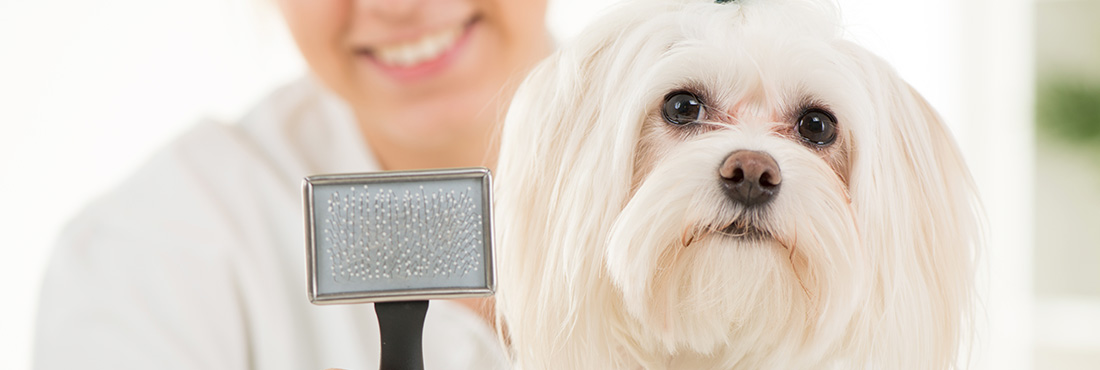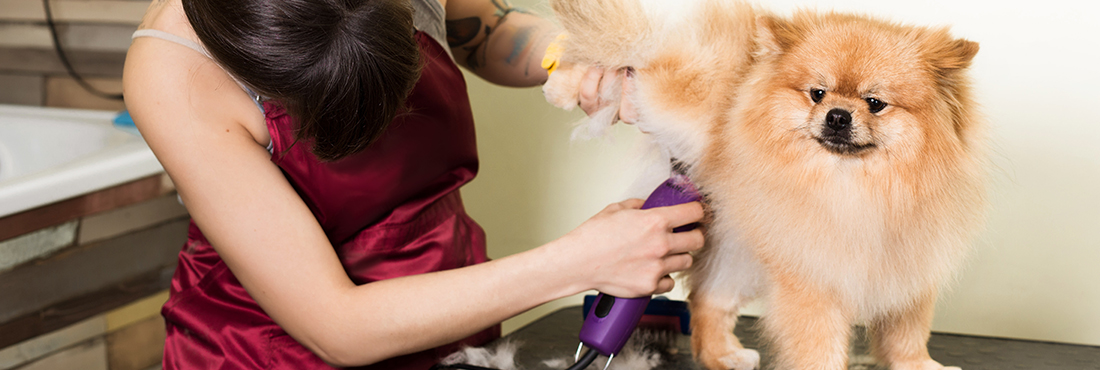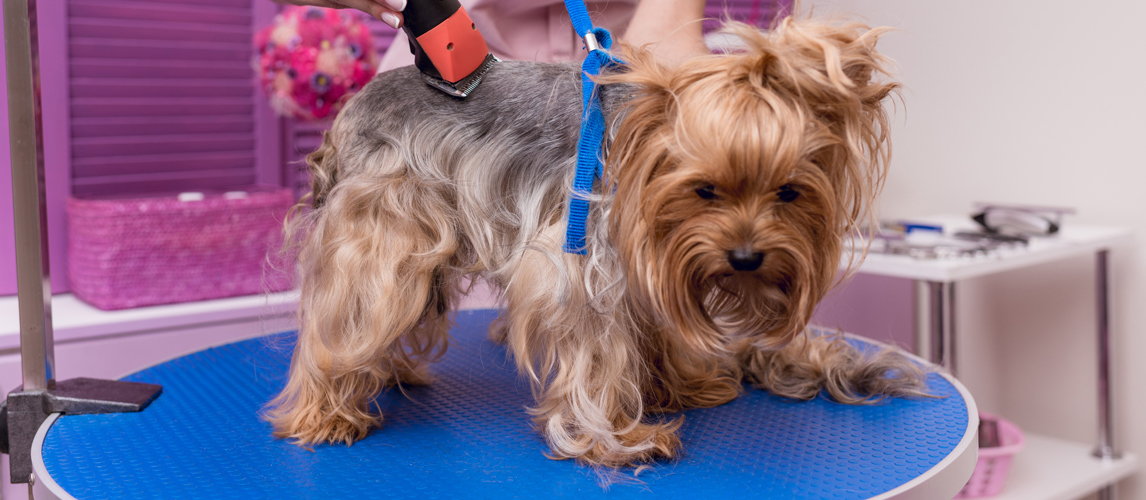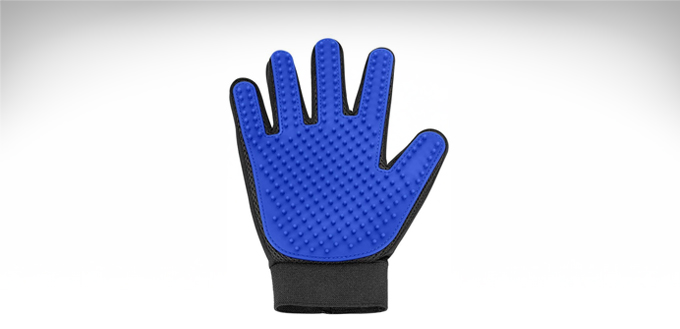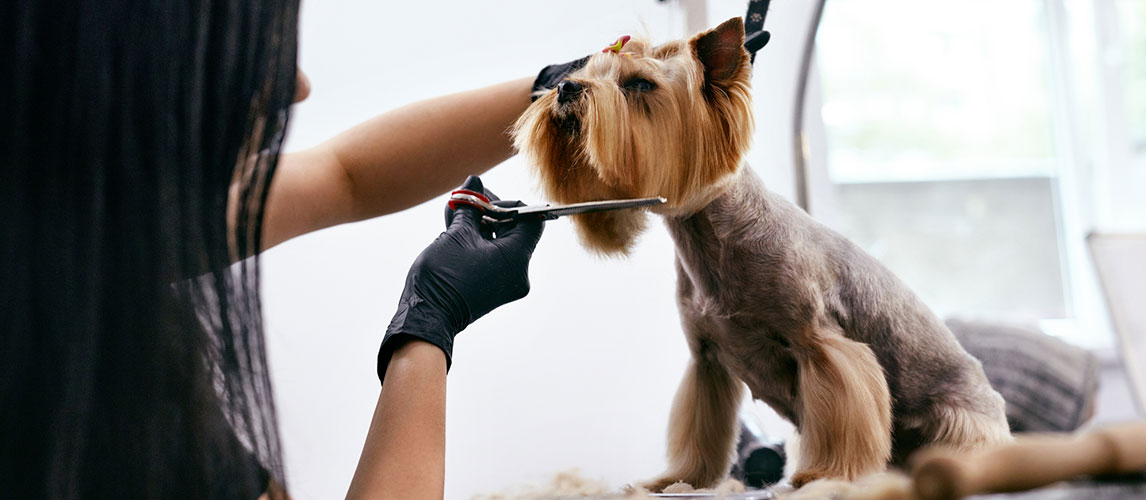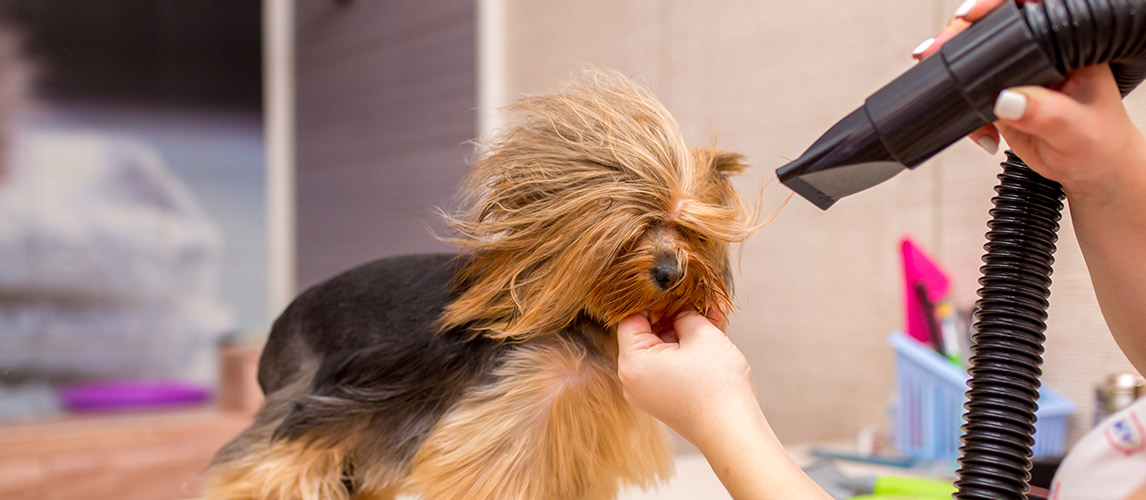A regular grooming routine is essential for your dog’s health and well-being. And the act of brushing your dog can also help to strengthen your bond and give you quality time with your pet. But when it comes to choosing the right brush for your dog, it can often feel like you are spoilt for choice.
With so many types of dog brushes, it can be challenging to know which one is best suited to your pet, their age, breed, and coat types. So, before you splash out on a new set of grooming tools, we look at the main types of dog brushes you can buy, and what they are best used for.
Why Grooming Your Dog is So Important
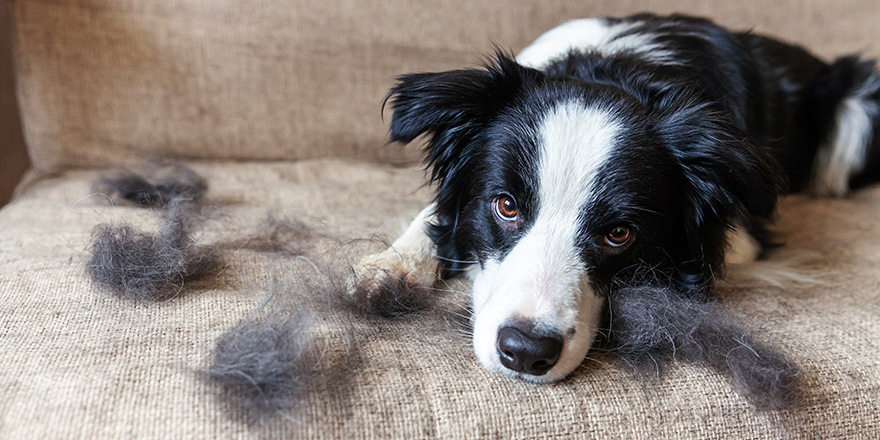
Not all dogs require the same level of brushing, as it does depend on the breed, their age, and their coat type as well as the level of outdoor activities they like to engage in. However, it is important that all canines have a regular grooming routine.
Regularly brushing your dog will help to remove any dead hair, especially during the shedding season, which can not only benefit your pet but also help to keep your home and furniture clean. Regular brushing also prevents mats and tangles, while the brushing motion also helps to distribute the natural oils in your dog’s skin to keep their coat healthy and shiny.
Regular brushing allows you to check out your dog and assess their pet health. And finally, the simple act of grooming your dog can help the pair of your bond as it builds trust while ensuring you both have some quality pooch and dog parent time.
The Different Types of Dog Grooming Brushes
From getting rid of tangles and raking out the loose undercoat to sweeping away dirt and debris, there’s a dog grooming brush for every occasion. And it is most likely that as a dog owner, you will add several different types of brushing to your pooch’s grooming kit collection.
To help match your grooming kit to your dog’s specific coat type, we brush up on the main types of dog grooming brushes you can choose from.
Bristle Brush
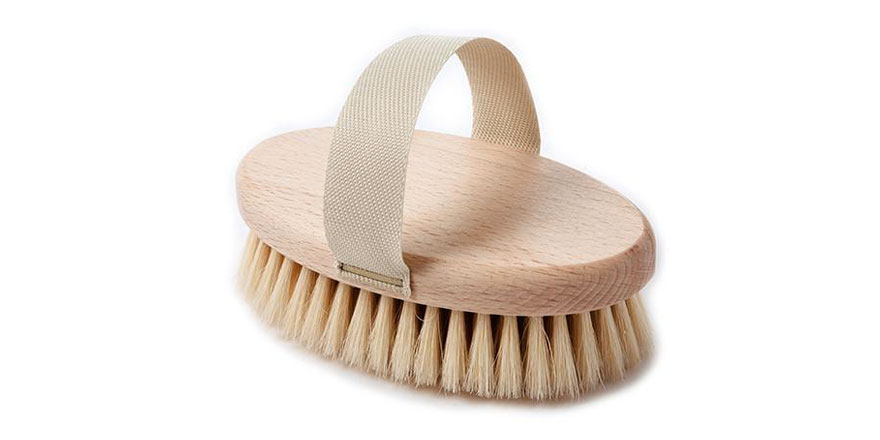
An excellent staple for any canine grooming kit, the soft clustered bristle of this brush means it can be used on puppies and adult dogs. Bristle brushes look quite similar to a human’s hairbrush and can have either natural or nylon bristles of varying lengths.
Ideal for gently distributing those natural oils as you sweep over the fur, bristle brushes can also be used on more sensitive areas of your pet’s body. It is a good choice for introducing a young pup to regular grooming, too, or for dogs that have short or thin coats. Or use a soft bristle dog brush as a finishing brush on smooth-coated dogs during a fuller grooming routine as a final slicker to add a lovely, glossy finish.
Best for: short, silky, or thin coats such as Yorkshire terriers or as a finishing brush on all dog coat types
Slicker Brush
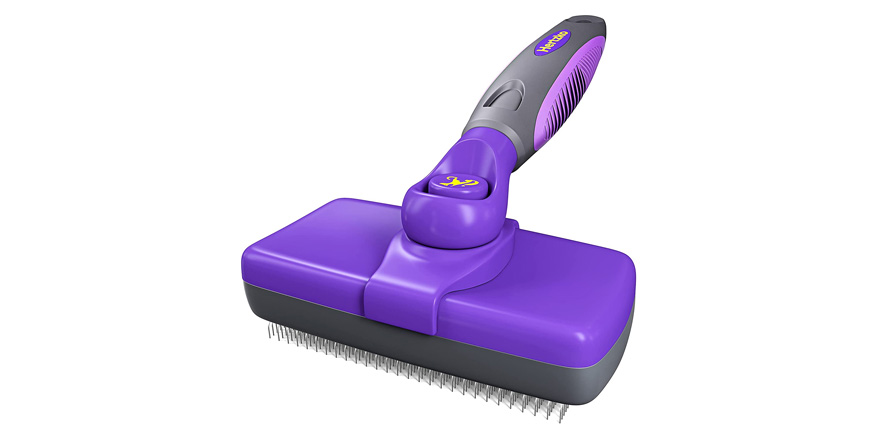
A staple of many dog grooming kits, slicker brushes are excellent for removing dirt or debris from your pet’s fur. Typically, with a rectangle flat surface, the slicker features many fine wires packed closely together to create a grooming surface that can dig deeper into your dog’s undercoat without scratching their skin.
Brush from the surface to the end of the hair in smooth motions, gently lifting the fur as you go to remove dead hair, dirt, and debris. Many slicker brushes are also self-cleaning, thanks to a click button that releases all the collected hair and dirt.
The slicker brush should be the first to use in your grooming routine, followed by a surface brush such as the bristle. It can be used on most dog coats but is particularly suited to longer or thicker coats as it is a good way to detangle the fur.
Best for: removing dirt and tangles on long, wire coats or thick coats
Pinhead Brush
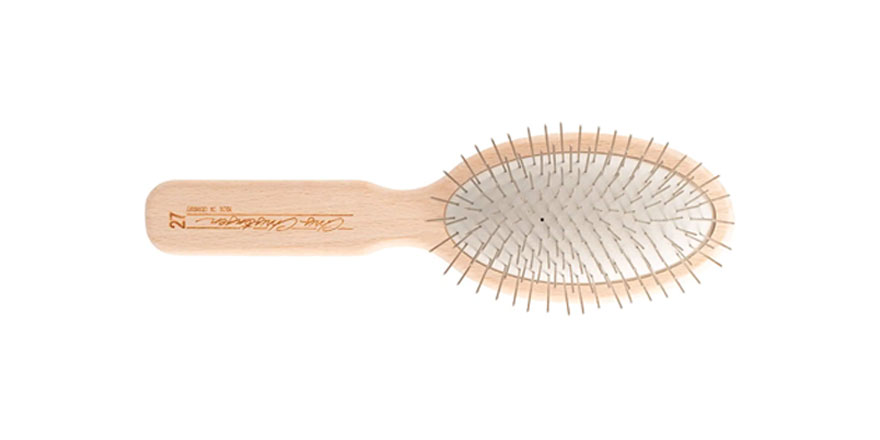
Another dog grooming tool similar to one of our brushes, the pinhead brush, works similarly. With its round head and curvy handle, you have a soft rubber central pad that houses a collection of pin-like bristles. These metal pins are flexible, so won’t scrape the skin but are secure enough to pick up loose fur and dirt. And they tend to have wider spaces between the stainless steel pins than a standard bristle brush which help to prevent a build-up of static in the fur. They can also be gently used on tails and ears if you don’t apply too much pressure.
You can get a single pin brush or double-sided dog brushes that feature the pinheads on one side and bristles on the other for the ideal combo dog brush And, just like the bristle brush, the pin brush is an excellent way to put a finishing gloss on your pooch’s coat.
Best for: medium and long coats, curly coats, silky fur, or as a finishing brush on all coat types
Undercoat Rake
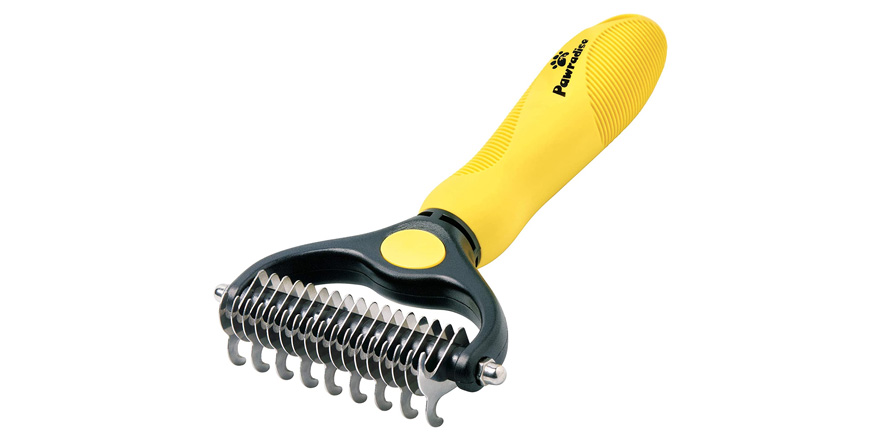
The undercoat rake might sound a little harsh, but it is, in fact, a very useful (and safe to use) dog grooming tool. It resembles a potato peeler, with curved, teeth-like blades that rake through the undercoat and remove loose hair.
The best brush for medium hair dogs such as golden retrievers, it is also suited to long-haired dogs, dogs who are heavy shedders or have very thick double coats as it is designed to gently pull away excess fur in the undercoat. As it rakes, it can also help you manage your dog’s excess shedding, especially during the shedding season when that loose hair can become a problem. It is also a great tool for detangling knotted fur, although it is important not to pull too hard. The undercoat rake works well as a grooming pair with a bristle brush, then smooth down and gloss the top fur.
Best for: dogs with medium to long coats; thick double fur
De-Shedder
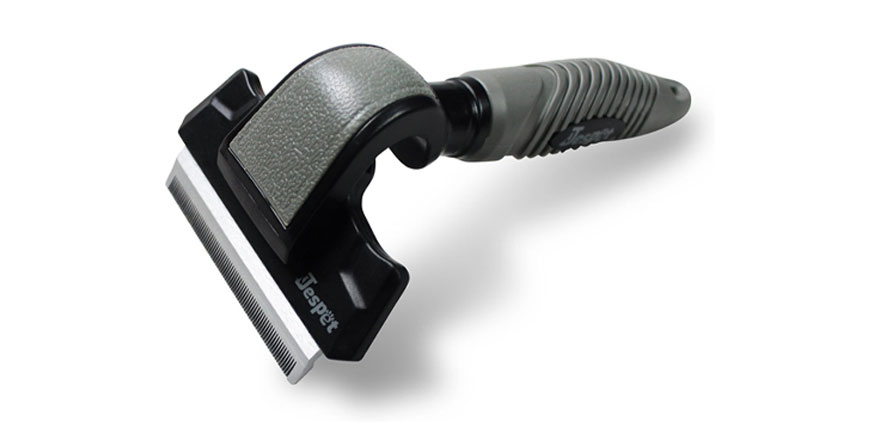
Designed specifically for removing large amounts of fur and thinning out the undercoat, a de-shedder can be an invaluable tool for owners of heavy-shedding dogs. Similar in design to the rake comb, the de-shedder has much smaller ‘teeth’ in one or two rows which work to painlessly catch and pull loose fur.
A de-shedder is best used after brushing your dog’s coat with a pinhead or bristle brush to remove any tangles and dirt. Then, using smooth, even strokes across your dog’s body in the direction of the fur growth, use the de-shedder to brush your dog. You will need to frequently remove the collected fur from the head, but many de-shedders have a button that releases the fur for easy cleaning.
Best for: all coat types, but especially double-coated fur
Grooming Glove
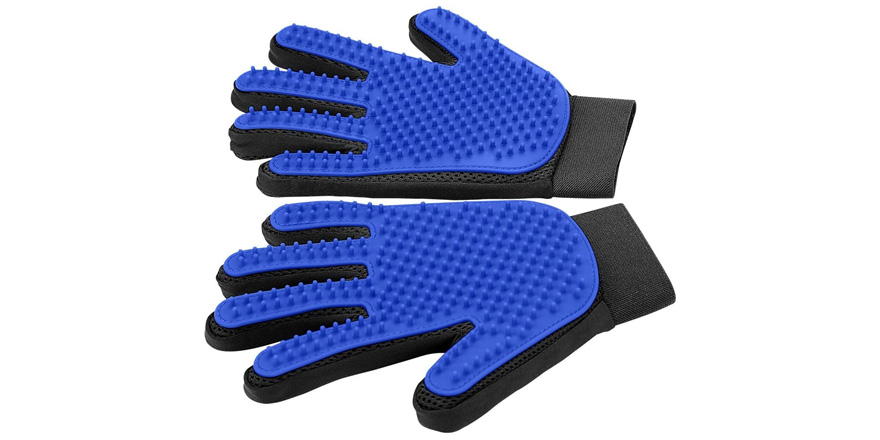
For when you need to make quick work of grooming your pup, a rubber glove brush is a great tool to use. And it feels good for your dog, as it will massage as it brushes. Designed as a tough glove, these mitt-style rubber brushes have a series of silicone knobbles on the palm, which scoop up loose fur, dead hair, and dirt as you rub them over the fur.
Simply pop the rubber brush glove on and pat your dog in short, sweeping strokes all over their body without pressing too hard. As it grooms and massages, it will spread all your dog’s natural oils across its fur for a lovely, healthy sheen. And for a smoother slide on your dog’s coat, you can also spray a little water first before using a rubber brush for dogs.
As you remove loose fur, it will easily stick to the silicone tips of the rubber glove brush, so you will need to clean it as you go along. And it will need regular rinsing to prevent any dirt build-up. But as a fun way to bond with your dog while grooming and giving him a massage to boot, what’s not to love about grooming gloves!
Best for: dogs with short coats to medium length fur and smooth coats

